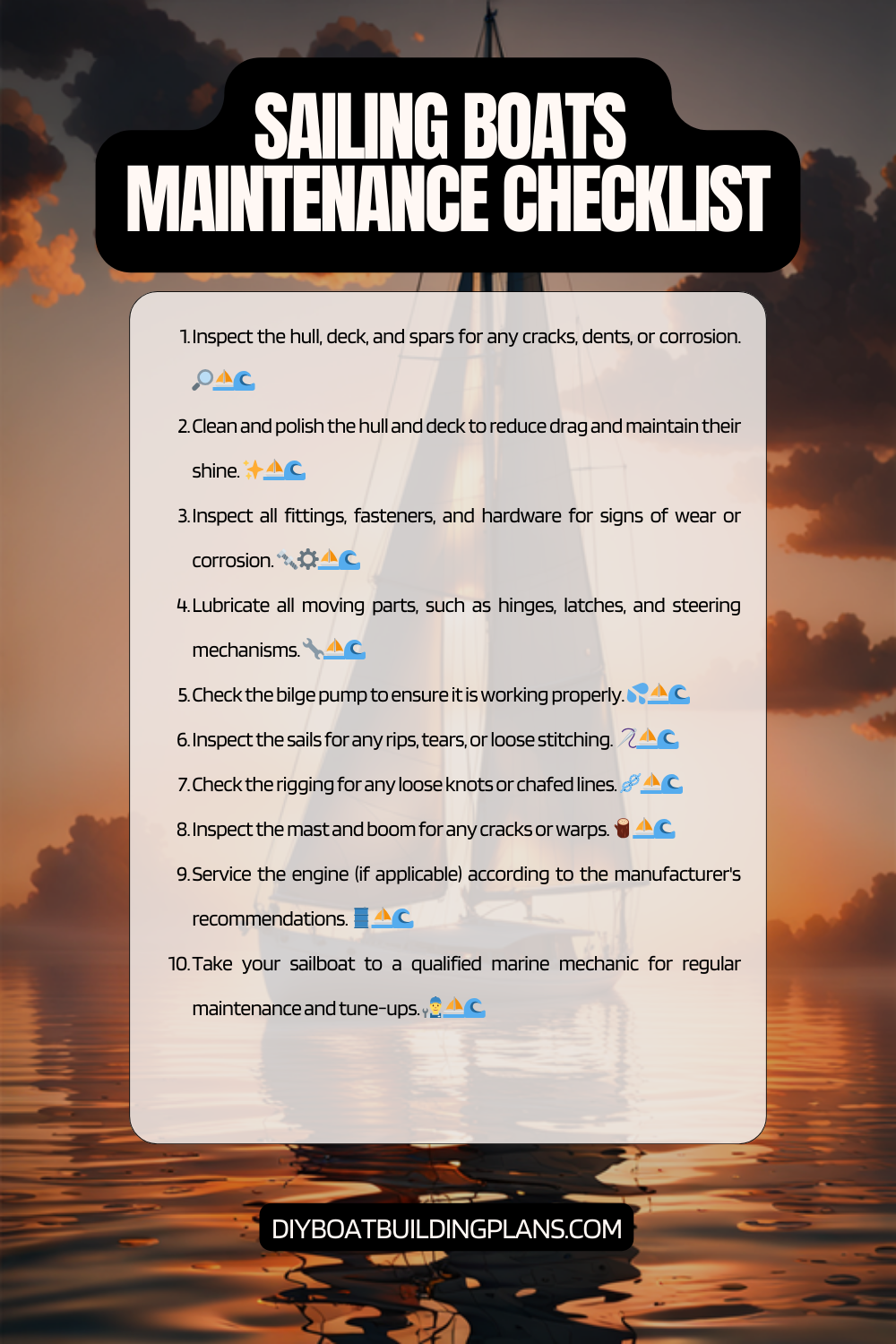Overview of Sailing Boat Maintenance Tips
Maintaining a sailing boat is crucial for ensuring its longevity and optimal performance. Just like any other vehicle or equipment, boats require regular maintenance to keep them in top shape. Neglecting boat maintenance can lead to a range of issues, from decreased performance and safety hazards to costly repairs. By implementing a regular maintenance routine, boat owners can extend the life of their vessels and enjoy many years of smooth sailing.
Key Takeaways
- Regular maintenance is crucial for the longevity and safety of your sailing boat.
- Preparing your boat for maintenance includes removing all personal belongings and securing loose items.
- Cleaning and polishing your boat regularly can prevent damage from saltwater and UV rays.
- Checking and maintaining the hull, deck, rigging, engine, electrical system, plumbing, water system, and safety equipment are all important aspects of boat maintenance.
- Properly storing your boat during the off-season can prevent damage and prolong its lifespan.

Importance of Regular Maintenance
Neglecting boat maintenance can have serious consequences. Over time, the accumulation of dirt, grime, and saltwater can cause damage to the boat’s exterior and interior surfaces. This not only affects the aesthetics but also compromises the structural integrity of the vessel. Additionally, failing to address minor issues promptly can lead to more significant problems down the line, resulting in expensive repairs or even complete breakdowns.
Regular maintenance, on the other hand, can save Sailing Boat owners a significant amount of money in the long run. By addressing minor issues early on, they can prevent them from escalating into major problems that require costly repairs or replacements. Moreover, proper maintenance helps to identify potential issues before they become serious, allowing for timely intervention and cost-effective solutions.
Preparing Your Boat for Maintenance
Before diving into boat maintenance tasks, it is essential to prepare your vessel properly. Start by gathering all the necessary tools and supplies you will need for the maintenance tasks ahead. This includes cleaning products, lubricants, brushes, and any specialized equipment required for specific maintenance areas.
Next, ensure that your boat is securely docked or anchored in a safe location. This will provide stability and ease of access during the maintenance process. It is also advisable to check the weather forecast beforehand to avoid working in unfavorable conditions.
Lastly, make sure you have a checklist or plan outlining the specific maintenance tasks you need to perform. This will help you stay organized and ensure that no crucial areas are overlooked during the process.
Cleaning and Polishing Your Boat
| Wash boat exterior | Every 2 weeks | 2-3 hours | Bucket, sponge, boat soap, hose |
| Wax boat exterior | Every 3 months | 4-6 hours | Wax, applicator pads, microfiber towels |
| Clean boat interior | Every 2 weeks | 1-2 hours | Vacuum, all-purpose cleaner, microfiber towels |
| Polish metal fixtures | Every 6 months | 2-3 hours | Metal polish, microfiber towels |
| Scrub non-skid surfaces | Every 2 weeks | 1-2 hours | Stiff-bristled brush, all-purpose cleaner, hose |
Cleaning and polishing your boat is not only about maintaining its appearance but also protecting its surfaces from damage. Start by rinsing the boat thoroughly with fresh water to remove any saltwater or debris. Use a mild detergent and a soft brush to clean the exterior surfaces, paying special attention to areas prone to dirt buildup, such as the hull, deck, and windows.
After cleaning, it is essential to apply a protective wax or polish to the boat’s exterior. This will help to prevent oxidation, fading, and damage caused by UV rays. Choose a high-quality marine-grade wax or polish and follow the manufacturer’s instructions for application.
Regular cleaning and polishing not only enhance the boat’s aesthetics but also contribute to its longevity. By removing dirt, salt, and other contaminants, you prevent them from causing corrosion or deterioration of the boat’s surfaces.
Checking and Maintaining the Hull
The hull is one of the most critical components of a sailing boat, as it provides buoyancy and stability in the water. Regularly checking and maintaining the hull is essential for ensuring its integrity and preventing any potential issues.
Start by inspecting the hull for any signs of damage, such as cracks, blisters, or delamination. These can be indicators of underlying structural problems that need immediate attention. If you notice any issues, consult a professional boat repair service for further assessment and repairs.
In addition to visual inspection, it is crucial to clean the hull regularly to prevent the buildup of marine growth, such as barnacles or algae. This can be done using specialized hull cleaners or by scrubbing with a soft brush. Applying antifouling paint can also help to deter marine growth and protect the hull from damage.
Maintaining the hull’s integrity is vital for ensuring safe navigation and preventing water intrusion that can lead to more severe problems like sinking or structural damage. Regular inspections and cleaning are key to identifying and addressing any issues promptly.
Maintaining the Deck and Rigging
The deck and rigging of a sailing boat are exposed to various elements, including saltwater, UV rays, and constant movement. Proper maintenance of these areas is crucial for ensuring the safety and performance of the vessel.
Regularly inspect the deck for any signs of wear or damage, such as loose fittings, cracked surfaces, or damaged non-skid materials. Replace or repair any compromised components promptly to prevent accidents or further deterioration.
The rigging, including the mast, shrouds, and stays, should also be inspected regularly. Look for signs of corrosion, fraying, or loose connections. Ensure that all the rigging components are properly tensioned and lubricated as per the manufacturer’s recommendations.
Regular maintenance of the deck and rigging not only ensures the safety of the crew but also contributes to the overall performance of the boat. Well-maintained rigging allows for efficient sail handling and maneuverability, while a clean and well-kept deck provides a comfortable and safe environment for everyone on board.
Checking and Maintaining the Engine
The engine is the heart of a sailing boat, providing power for propulsion and electrical systems. Regular checks and maintenance are essential to keep it running smoothly and avoid unexpected breakdowns.
Start by checking the engine’s fluid levels, including oil, coolant, and fuel. Top up or replace fluids as necessary, following the manufacturer’s recommendations. Inspect all belts, hoses, and connections for signs of wear or leaks. Replace any damaged components promptly to prevent further damage or engine failure.
Regularly changing the engine’s oil and filters is crucial for maintaining its performance and longevity. Follow the manufacturer’s guidelines for oil change intervals and use high-quality marine-grade oil and filters.
Additionally, it is essential to inspect and clean the engine’s cooling system, including the raw water intake and heat exchanger. Over time, these components can become clogged with debris, affecting the engine’s cooling efficiency. Regular cleaning and maintenance will help to prevent overheating and potential engine damage.
Electrical System Maintenance
The electrical system of a sailing boat is responsible for powering various components, including lights, navigation instruments, and communication devices. Proper maintenance of this system is crucial for ensuring safety and functionality on board.
Regularly inspect all electrical connections for signs of corrosion or loose connections. Clean and tighten any compromised connections to ensure a reliable electrical flow. Check all fuses and circuit breakers to ensure they are in good working condition.
Inspect the battery bank regularly, checking for proper voltage levels and signs of corrosion on terminals. Clean the terminals with a wire brush and apply a protective coating to prevent further corrosion.
It is also important to test all electrical components, such as lights, pumps, and navigation instruments, to ensure they are functioning correctly. Replace any faulty components promptly to avoid potential safety hazards or system failures.
Proper maintenance of the electrical system not only ensures the functionality of various onboard systems but also reduces the risk of electrical fires or other safety issues.
Plumbing and Water System Maintenance
The plumbing and water system of a sailing boat are responsible for providing fresh water for drinking, cooking, and sanitation purposes. Regular maintenance is crucial for ensuring a clean and reliable water supply on board.
Inspect all plumbing connections for leaks or signs of wear. Replace any damaged hoses or fittings promptly to prevent water damage or loss. Clean all faucets, showerheads, and other fixtures regularly to remove any mineral deposits or debris.
It is also important to maintain the freshwater tanks and systems properly. Regularly clean and sanitize the tanks to prevent the growth of bacteria or algae. Follow the manufacturer’s recommendations for tank cleaning products and procedures.
Additionally, it is advisable to inspect and maintain the boat’s bilge pump system regularly. This system is responsible for removing any water that accumulates in the bilge area. Ensure that the pump is in good working condition and that the float switch is functioning correctly.
Proper maintenance of the plumbing and water system ensures a clean and reliable water supply on board, preventing potential health hazards or system failures.
Safety Equipment Maintenance
Safety should always be a top priority when it comes to sailing. Regular maintenance of safety equipment is crucial for ensuring its functionality and reliability in case of emergencies.
Inspect all safety equipment, including life jackets, fire extinguishers, flares, and first aid kits. Check for any signs of damage or expiration dates. Replace any expired or damaged items promptly to ensure they are ready for use when needed.
It is also important to regularly test and maintain the boat’s navigation and communication systems, such as GPS, VHF radio, and radar. Ensure that these systems are in good working condition and that all necessary licenses or registrations are up to date.
Regularly inspect and maintain the boat’s emergency signaling devices, such as distress signals and emergency lights. Ensure that they are easily accessible and in good working condition.
Proper maintenance of safety equipment is essential for ensuring the well-being of everyone on board and increasing the chances of a successful response in case of emergencies.
Download over 500 Boat Plans. Click on the link below.
-->Click Here<--
Storing Your Boat Properly
Proper storage is crucial for maintaining the condition of your sailing boat during periods of non-use or winter months. Follow these tips to ensure your boat remains in optimal condition while in storage.
Start by thoroughly cleaning and drying the boat before storing it. Remove any dirt, debris, or moisture that could lead to mold or corrosion during storage.
Choose a suitable storage location that provides protection from the elements, such as a covered storage facility or a boat shed. If storing outdoors, use a high-quality boat cover to protect the vessel from UV rays, rain, and snow.
Before storing, it is important to winterize the boat’s systems, including the engine, plumbing, and electrical systems. This involves draining or treating the systems to prevent freezing or damage during cold temperatures.
Regularly inspect the boat during storage to ensure that it remains in good condition. Check for any signs of damage, leaks, or pest infestations. Address any issues promptly to prevent further damage or deterioration.
Proper storage of your boat ensures its longevity and minimizes the risk of damage during periods of non-use. By following these tips, you can ensure that your vessel is ready for the next sailing season.
Sailing Boat Maintenance Checklist

Conclusion – Sailing Boat Maintenance Tips
Regular boat maintenance is essential for ensuring the longevity, performance, and safety of your sailing vessel. Neglecting maintenance can lead to costly repairs, decreased performance, and potential safety hazards. By implementing a regular maintenance routine and following the tips provided in this article, you can extend the life of your boat and enjoy many years of smooth sailing.
Remember to prepare your boat properly before starting any maintenance tasks, clean and polish the exterior surfaces regularly, check and maintain critical components such as the hull, deck, rigging, engine, electrical system, plumbing, and safety equipment.
Finally, store your boat properly during periods of non-use to protect it from the elements. By prioritizing boat maintenance, you can ensure that your vessel remains in optimal condition and ready for your next adventure on the water.
FAQs – Sailing Boat Maintenance Tips
What is sailing boat maintenance?
Sailing boat maintenance refers to the regular upkeep and repair of a sailing boat to ensure its proper functioning and longevity.
Why is sailing boat maintenance important?
Sailing boat maintenance is important to ensure the safety of the crew and passengers, prevent breakdowns and costly repairs, and maintain the value of the boat.
What are some basic sailing boat maintenance tasks?
Basic sailing boat maintenance tasks include cleaning the boat, checking and changing the oil and filters, inspecting the rigging and sails, and checking the electrical and plumbing systems.
How often should I perform sailing boat maintenance?
The frequency of sailing boat maintenance depends on the usage and condition of the boat. However, it is recommended to perform basic maintenance tasks on a regular basis and schedule more extensive maintenance annually.
What are some common problems that can occur with a sailing boat?
Common problems that can occur with a sailing boat include leaks, engine failure, rigging issues, and electrical or plumbing problems.
Can I perform sailing boat maintenance myself?
Yes, many basic sailing boat maintenance tasks can be performed by the boat owner. However, more extensive repairs and maintenance may require the assistance of a professional.



